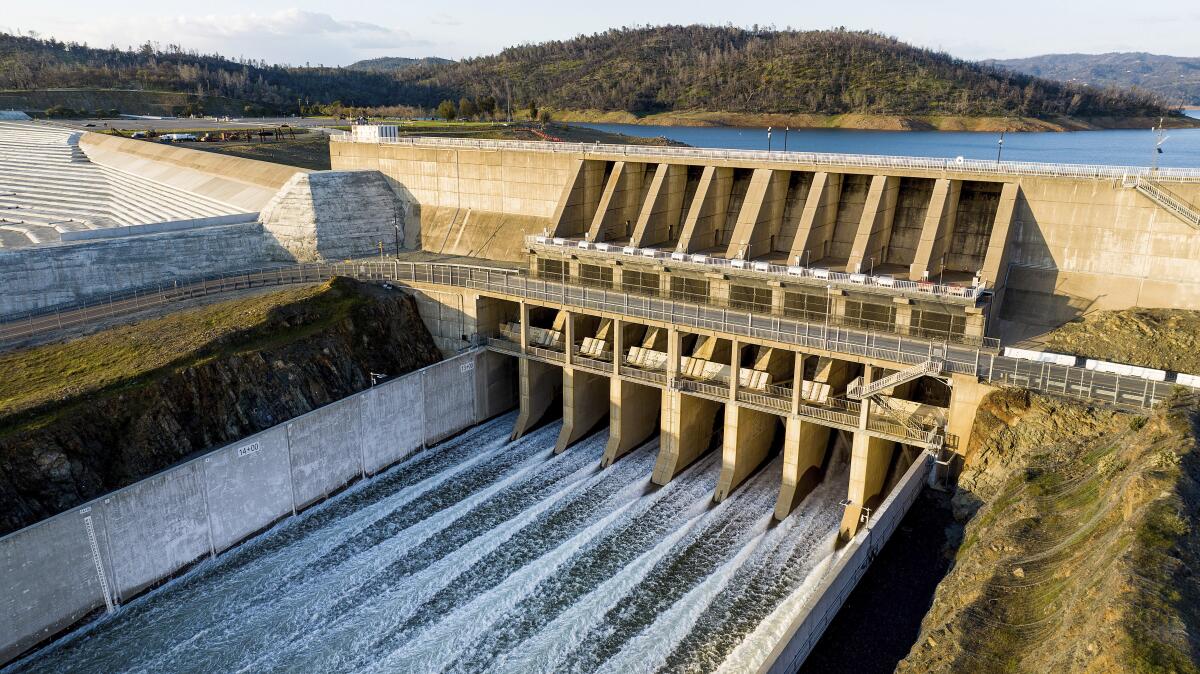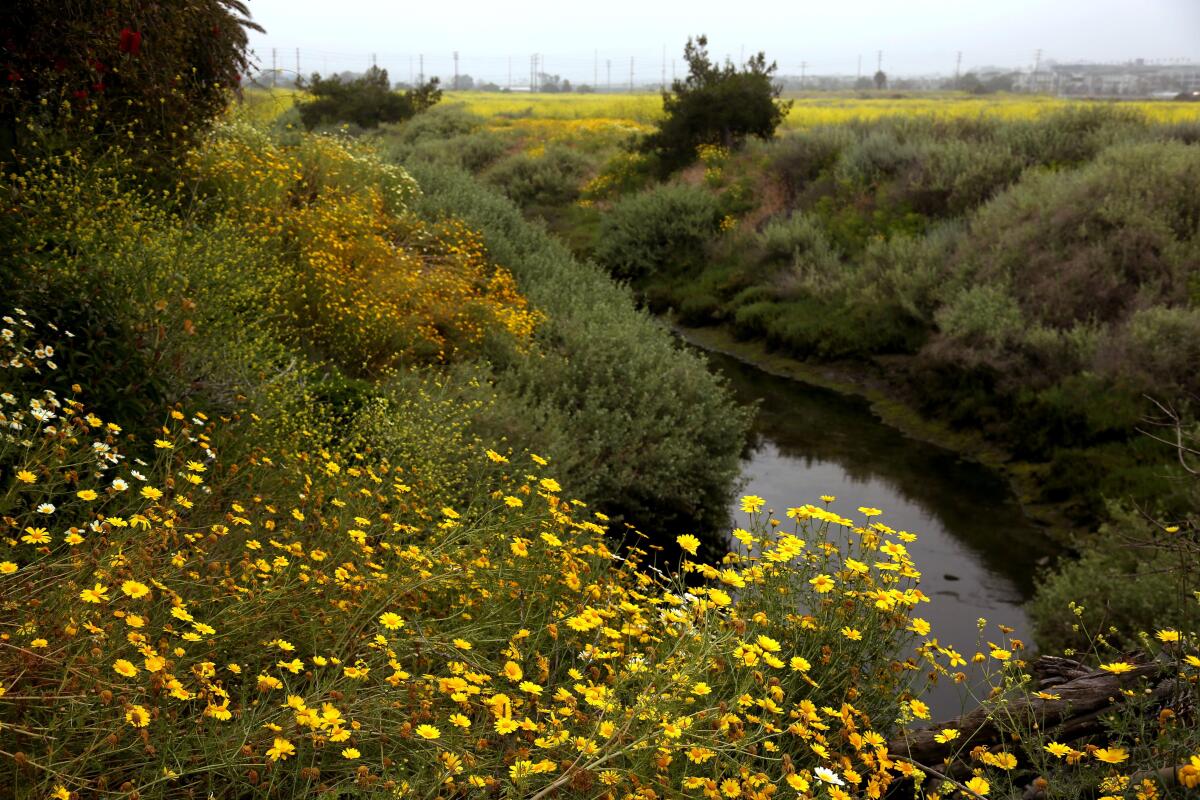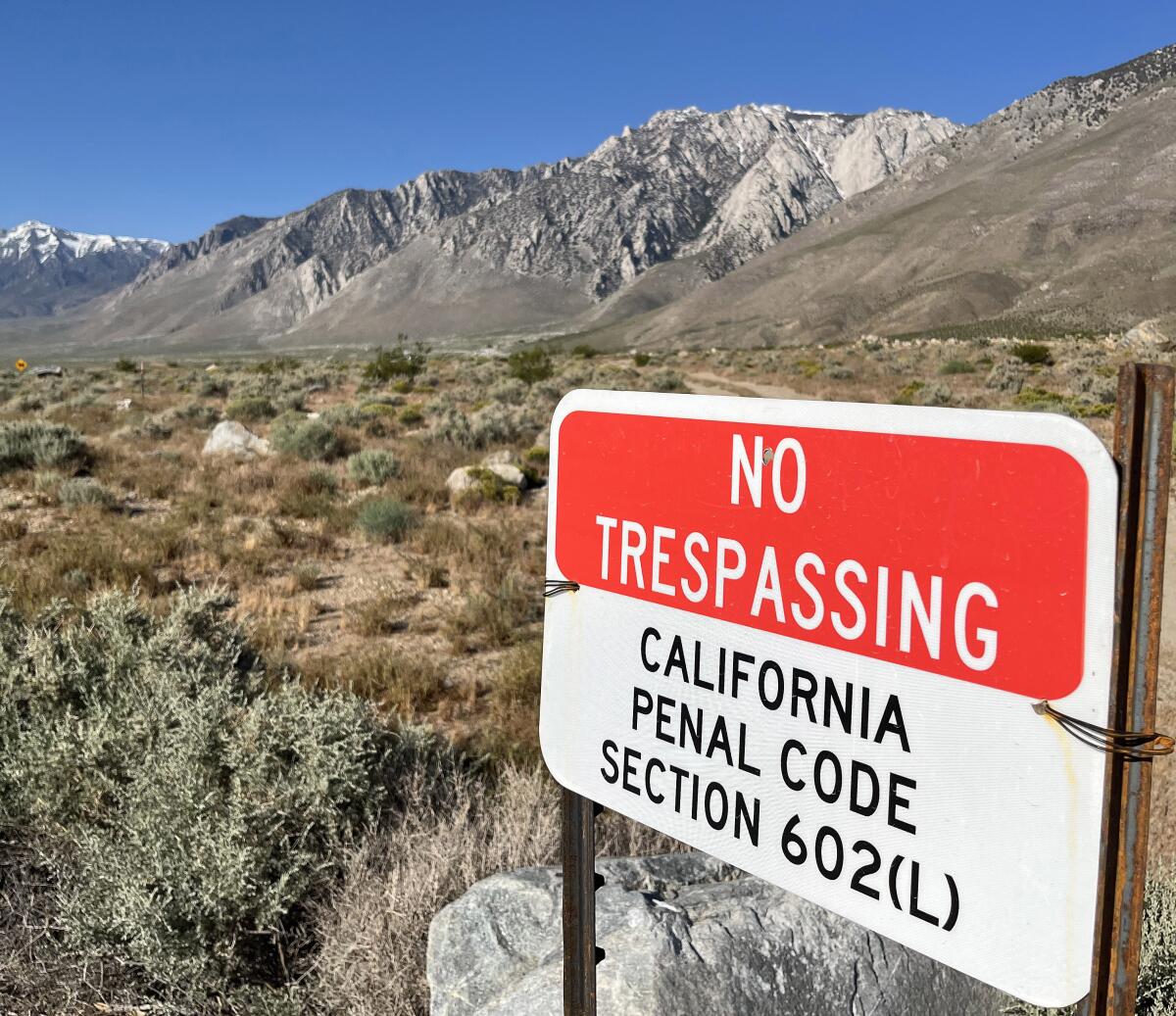Boiling Point: Brace for summer danger

- Share via
This story was originally published in Boiling Point, a newsletter about climate change and the environment. Sign up here to get it in your inbox.
In a warming world, summer is one of the most dangerous times.
Despite relatively cool temperatures in Southern California recently, we’re entering the hottest part of the year here and across the West. Los Angeles is launching an awareness campaign about the health hazards of extreme heat, my colleague Hayley Smith reports, following an L.A. Times investigation that found state officials have chronically undercounted heat-related deaths.
Phoenix faces similar risks, with a terrifying new study finding that a multiday heat wave — combined with a prolonged blackout — could send more than 800,000 people to the hospital and kill more than 13,000, per the Arizona Republic’s Joan Meiners.
We may still catch some breaks.
California officials say there’s a relatively low risk of power shortages and rolling blackouts this summer, thanks to healthy water levels at hydropower dams and lots of new batteries being added to the grid. Details here from The Times’ Russ Mitchell.
And even with all the rain and snow we got this winter, downstream flood risks may not be as bad as once feared.
At least so far, Sierra Nevada snowpack has been melting relatively slowly. In other good news, officials are redirecting some of the snowmelt into the California Aqueduct, where it will replenish Southern California water supplies, Ian James reports.
There are still plenty of unknowns this summer — wildfires being one of them.
Fire risk has gotten so bad that State Farm just announced it will no longer sell new home-insurance policies in California, the Wall Street Journal’s Leslie Scism reports. (Rising construction costs also contributed to the insurance company’s decision.)
In other wildfire news, a Montana judge ruled that the U.S. Forest Service can keep dropping retardant from the air to slow the spread of flames — even though doing so can pollute rivers in violation of federal law, the Associated Press’ Matthew Brown reports.
And so we wait, and do our best to prepare, and keep slashing planet-warming pollution.
Here’s what else is happening around the West:
WATER IN THE WEST

Last week, most U.S. wetlands and dry creek beds were protected under the Clean Water Act. This week, they’re not. The Times’ David G. Savage wrote about the Idaho couple who took their case to the Supreme Court and won a 5-4 ruling from the court’s conservative majority that dramatically reduces the reach of the Clean Water Act. Our water reporter, Ian James, talked with the chair of California’s water board to find out what the decision means for the state. For instance, the ruling could have implications for some of Southern California’s last remaining coastal wetlands. Just this month, as it happens, a judge paused the state’s plan for restoring those wetlands, saying the environmental review was inadequate, my colleague Louis Sahagún reports.
California could have been forced to accept huge mandatory cuts to its Colorado River water supplies. Instead, the state will probably skirt by with lesser, voluntary cutbacks, under a plan endorsed by the seven Colorado River Basin states, Hayley Smith and Ian James report. The plan may work as a short-term stopgap, but some experts say it will be nowhere near enough in the long term, and that larger, more permanent cuts from farms and cities will be needed. If you’re looking for a reminder of how Western states actually use Colorado River water, this New York Times graphic does a great job telling the story. More than half the water consumed in the basin is used to grow livestock feed — and ultimately to put meat and dairy on our plates.
“I expect that in 20 years we’ll still be reminiscing about 2023.” A new study predicts a bleak future for California’s mountain snowpack, with researchers projecting that from the 2050s to 2100, rising temperatures “could push average snowlines 1,300 feet to 1,600 feet higher across the Sierra Nevada and the southern Cascades,” Ian James writes. Despite the changes that are clearly underway, the state auditor says California’s Department of Water Resources has failed to plan for climate impacts to water supplies, James reports. Department officials disagree, saying they’ve been incorporating climate into their planning for years.
THE ENERGY TRANSITION
A federal appellate court ruling throwing out Berkeley’s ban on gas appliances in new homes and businesses has had ripple effects across the region, as other cities and states worry that their own bans cold face similar challenges. Washington state is temporarily delaying the first statewide mandate for electric heat pumps in new buildings, David Iaconangelo reports for E&E News. The San Diego County city of Carlsbad has also paused its electrification ordinance, Tigist Layne reports for Voice of San Diego. Palo Alto, meanwhile, is making an exception to its all-electric buildings policy and allowing celebrity chef José Andrés to open a restaurant with gas cooking, The Times’ Terry Castleman writes.
As Washington state prepares to shut down its last coal plant in 2025, workers are wondering what they’ll do next and startups are pitching clean-energy technologies to take advantage of the area’s electric lines. Here’s the story from Renata Geraldo at the Seattle Times, who writes that green hydrogen and nuclear fusion are some of the ideas being thrown around to produce clean power and maintain jobs. In Nevada, meanwhile, the delay of two large solar farms means the state may need to rely on its final coal plant longer than expected, Sean Hemmersmeier reports for the Las Vegas Review-Journal.
The Biden administration seems to be continuing a Trump administration pattern of not processing many criminal cases for golden eagles killed by wind turbines. That’s according to this investigation by the Associated Press’ Matthew Brown and Camille Fassett, who write that “significant numbers of eagles continue to die while fewer criminal cases are pursued.”
TRANSPORTATION, CLEAN AND DIRTY
What would Los Angeles look like without freeways? That was the question guiding this fabulous feature in The Times’ Image magazine, which asked artists to reimagine the city’s look, feel and functionality if they could delete their freeway of choice. Of course, devoting less space to highways would require a lot more people to embrace other modes of transportation, including public transit — and right now, concerns over safety and lack of shade have made our trains and buses increasingly inhospitable, especially to women, columnist Carolina A. Miranda writes. Local officials are continuing to grow the Metro system, at least, with my colleague Rachel Uranga previewing a new regional connector rail line that will open in June. They’re also studying congestion-pricing plans that could require Angelenos to pay a fee to drive through areas with especially bad traffic, Uranga writes.
Ford Motor Co. has agreed to buy lithium from geothermal power producer EnergySource, in a major development for the long-heralded lithium resource buried beneath the southern end of California’s Salton Sea. The Desert Sun’s Janet Wilson has the details; see also my previous reporting on the race for “white gold” in the Imperial Valley. Salton Sea-area lithium could fuel electric-car batteries across the country — while also contributing to small-scale earthquakes, Brooke Staggs writes for the Press-Enterprise in Riverside. In other electric-vehicle news, The Times’ Russ Mitchell covered a data dump showing that problems with Tesla’s automated driving technology “may be far more common than media reports and regulators have let on.”
The FBI is investigating hazardous materials that the Martinez oil refinery dumped on Bay Area homes over Thanksgiving, joining the Environmental Protection Agency in canvassing local residents for information. “The fallout left cars, homes and at least one school blanketed in a white powdery substance,” Tony Briscoe writes. “Tests determined that the residue contained metals such as aluminum, barium, chromium, nickel, vanadium and zinc.” The November incident was only the latest example of local pollution spewed by the oil refineries that produce the gasoline so many of us use to fuel our cars and trucks.
POLITICAL CLIMATE
U.S. Interior Secretary Deb Haaland made a surprise visit to the Grand Canyon, to meet with Indigenous tribes and learn about a proposed national monument that would protect more than 1 million acres from mining. The Arizona Republic’s Debra Utacia Krol wrote about Haaland’s visit and explained why tribes are urging President Biden to establish the Baaj Nwaavjo I’tah Kukveni Grand Canyon National Monument. Another national monument proposal is taking shape in Nevada, where the Las Vegas Review-Journal’s Jessica Hill reports that conservationists and Native American activists are hoping to protect 33,000 acres in the east Las Vegas area. Utah lawmakers, meanwhile, continue to wage a legal battle to undermine the Antiquities Act, which allows presidents to designate national monuments. Jonathan Thompson wrote about that battle for High Country News.
The California Air Resources Board voted to ban hexavalent chromium, the cancer-causing chemical that gives classic cars their distinctive shine. Classic-car customizers and aviation companies will need to phase out chrome-6 by 2030, my colleague Tony Briscoe reports. A few blocks away at the state Capitol in Sacramento, the state Assembly approved a bill that would ban water profiteering by hedge funds, with the legislation now advancing to the Senate, Bloomberg’s Mark Chediak reports. Another bill in the Legislature would tighten up lead testing in schools, in the wake of new data showing one-quarter of California’s child-care centers may have dangerously high lead levels in their drinking water, The Times’ Dorany Pineda writes.
I’ve seen several stories about U.S. Rep. John Curtis, a Utah Republican, making the “conservative case for climate action.” It’s a case that involves lots of fossil fuels, as this piece by the Deseret News’ Ethan Bauer makes clear. I was also struck by this reporting from the Washington Post’s Maxine Joselow, who notes that Curtis has personally taken advantage of solar and geothermal energy tax credits from last year’s climate law, which he voted against. Also in Congress, there’s a bipartisan bill backed by House Speaker Kevin McCarthy aimed at protecting California’s giant sequoias, in part by fast-tracking environmental reviews for forest thinning and controlled burns. But some Democrats and environmentalists are opposed, Joselow writes.
AROUND THE WEST

California is temporarily halting construction of an Owens Valley highway-widening project that’s turned up many Native American remains — but only after tribes fiercely protested the tearing up of their ancient burial grounds. Here’s the story from my colleague Louis Sahagún. In another story of Native Americans fighting to protect their land, the Biden administration has paused its analysis of a controversial copper mine at Arizona’s Oak Flat, Hannah Northey reports for E&E News. At the same time, the administration is taking steps to ensure the controversial Thacker Pass lithium mine in Nevada can move forward, in response to a court ruling reinterpreting the 1872 Mining Law, the Associated Press’ Scott Sonner and Matthew Daly write.
The Biden administration held the first oil and gas lease sale on federal lands since passage of the Inflation Reduction Act, the climate law signed by President Biden last year. The law actually required continued fossil fuel leasing, in a concession to West Virginia Sen. Joe Manchin III, a pro-coal Democrat. The first sale resulted in more than 8,000 acres leased in New Mexico and Kansas and netted the federal government nearly $80 million, Adrian Hedden reports for the Carlsbad Current-Argus. Hundreds of environmental groups protested the sale, saying more fossil fuel production will only worsen the climate crisis.
She helped save one of the world’s rarest creatures from extinction — and herself along the way. My colleague Jeanette Marantos wrote a lovely profile of one of the scientists working to prevent the extinction of the thumbnail-size Palos Verdes blue butterfly, with Times videographers Jessica Q. Chen, Yadira Flores and Maggie Beidelman producing an uplifting video. Also in Southern California, researchers discovered thousands of Santa Ynez groundstars — a plant “that remained elusive for years because it’s so small that five can fit on the face of a penny,” Nathan Solis writes. Out in the desert, botanists are studying rare wildflowers — some so small you’ve got to get down on your belly to examine them, Jill Cowan writes for the New York Times.
ONE MORE THING
I personally find death scary and don’t enjoy talking about it. But if you care about climate change, it’s worth thinking about what happens to your body after you die. Traditional options can have serious environmental impacts, with cremation releasing planet-warming carbon dioxide into the atmosphere and burial leading to chemical contamination in the soil.
So I was encouraged — if still a bit terrified — to read this story by The Times’ Karen Garcia about alternative options for our bodies, some of which can actually help the environment. Those options include tree burial, water cremation and burial at sea.
We’ll be back in your inbox on Thursday. To view this newsletter in your Web browser, click here. And for more climate and environment news, follow @Sammy_Roth on Twitter.
Toward a more sustainable California
Get Boiling Point, our newsletter exploring climate change, energy and the environment, and become part of the conversation — and the solution.
You may occasionally receive promotional content from the Los Angeles Times.




